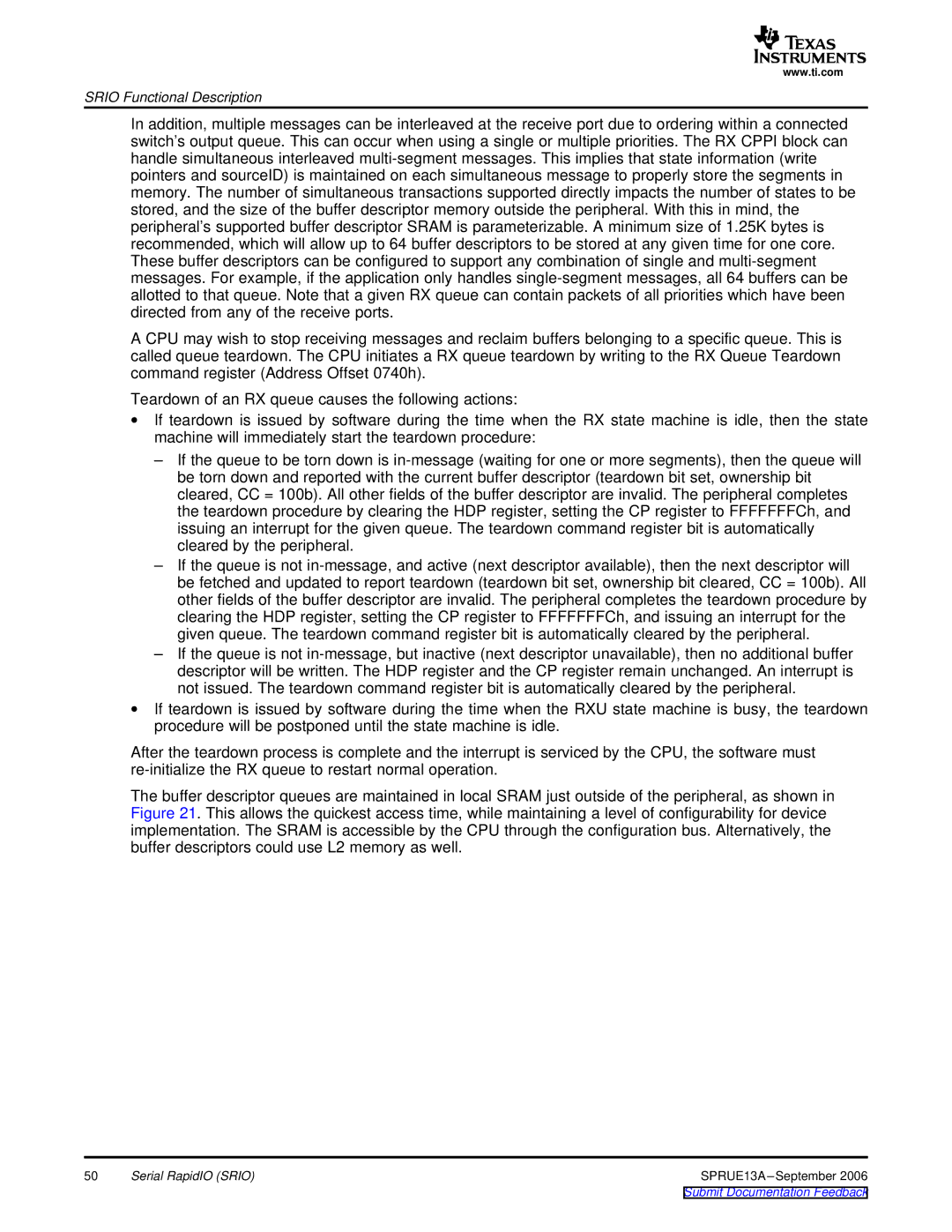
www.ti.com
SRIO Functional Description
In addition, multiple messages can be interleaved at the receive port due to ordering within a connected switch’s output queue. This can occur when using a single or multiple priorities. The RX CPPI block can handle simultaneous interleaved
A CPU may wish to stop receiving messages and reclaim buffers belonging to a specific queue. This is called queue teardown. The CPU initiates a RX queue teardown by writing to the RX Queue Teardown command register (Address Offset 0740h).
Teardown of an RX queue causes the following actions:
∙If teardown is issued by software during the time when the RX state machine is idle, then the state machine will immediately start the teardown procedure:
–If the queue to be torn down is
–If the queue is not
–If the queue is not
∙If teardown is issued by software during the time when the RXU state machine is busy, the teardown procedure will be postponed until the state machine is idle.
After the teardown process is complete and the interrupt is serviced by the CPU, the software must
The buffer descriptor queues are maintained in local SRAM just outside of the peripheral, as shown in Figure 21. This allows the quickest access time, while maintaining a level of configurability for device implementation. The SRAM is accessible by the CPU through the configuration bus. Alternatively, the buffer descriptors could use L2 memory as well.
50 | Serial RapidIO (SRIO) | SPRUE13A |
